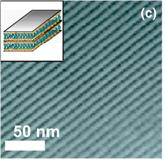Catalysis is an action by catalyst which takes part in a chemical reaction process and can alter the rate of reactions, and yet itself will return to its original form without being consumed or destroyed at the end of the reactions. This definition is one of many definitions about catalysis.
Three key aspects of catalyst action:
1. Taking part in the reaction
It will change itself during the process by interacting with other reactant/product molecules
2. Altering the rates of reactions
In most cases the rates of reactions are increased by the action of catalysts; however, in some
situations the rates of undesired reactions are selectively suppressed
3. Returning to its original form
• After reaction cycles a catalyst with exactly the same nature is ‘reborn’
• In practice a catalyst has its lifespan - it deactivates gradually during use
Already from these definitions, it is clear that there is a direct link between chemical kinetics and catalysis, as according to the very definition of catalysis it is a kinetic process. There are different views, however, on the interrelation between kinetics and catalysis. While some authors state that catalysis is a part of kinetics, others treat kinetics as a part of a broader phenomenon of catalysis.
Despite the fact that catalysis is a kinetic phenomenon, there are quite many issues in catalysis which are not related to kinetics. Mechanisms of catalytic reactions, elementary reactions, surface reactivity, adsorption of reactants on the solid surfaces, synthesis and structure of solid materials, enzymes, or organometallic complexes, not to mention engineering aspects of catalysis are obviously outside the scope of chemical kinetics.
Some discrepancy exists whether chemical kinetics includes also the mechanisms of reactions. In fact if reaction mechanisms are included in the definition of catalytic kinetics it will be an unnecessary generalization, as catalysis should cover mechanisms.
Catalysis is of crucial importance for the chemical industry, the number of catalysts applied in industry is very large and catalysts come in many different forms, from heterogeneous catalysts in the form of porous solids to homogeneous catalysts dissolved in the liquid reaction mixture to biological catalysts in the form of enzymes. Catalysis is a multidisciplinary field requiring efforts of specialists in different fields of chemistry, physics and biology to work together to achive the goals set by the mankind. Knowledge of inorganic, organometallic, organic chemistry, materials and surface science, solid state physics, spectroscopy, reaction engineering, and enzymology is required for the advancements of the discipline of catalysis.
















